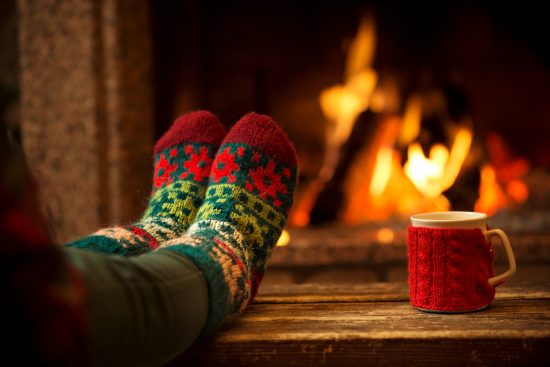

The first moment you get to light up your fireplace with your family is often a tender one (or should we say a tinder one?). After all, the lighting of the fireplace often signals the official start of the winter and, thus, the holiday season.
But as heartwarming as evenings around the fireplace may be, have you ever given much thought to the impact it may have on your health?
After all, fireplaces can be a source of indoor air pollution in some homes, particularly depending on the wood you burn and the current state of your chimney. Here’s what you need to know:
When Wood is the Wrongdoer
The primary culprit of fireplace pollution comes not from the fireplace itself, but from the wood you burn when it comes time for the colder weather to set in. This is because wood smoke releases fine particulate matter as it burns, posing a health hazard to the residents who may unwittingly breathe it in before it can be filtered or diffused.
“[Fine particles] are small enough to enter the lungs where they can cause bronchitis, pneumonia, asthma, or other serious respiratory diseases,” the Environmental Protection Agency (EPA) explains. “Fine particles can also aggravate chronic heart and lung diseases, and are linked to premature deaths in people with these chronic conditions.”
Specifically, this form of wood-related particle pollution involves the release of carbon monoxide, nitrogen oxides, and volatile organic compounds (VOCs), among other contaminants.
Even Your Chimney Needs to Breathe
Wood itself aside, having a clean and properly ventilated chimney is key in ensuring that smoke and other particles are guided up and out of the home, rather than back indoors.
“Combustion gases and particles also come from chimneys and flues that are improperly installed or maintained and cracked furnace heat exchangers,” according to the U.S. Consumer Product Safety Commission (CPSC). “Pollutants from fireplaces and woodstoves with no dedicated outdoor air supply can be ‘back-drafted’ from the chimney into the living space, particularly in weatherized homes.”
Thus, before you light your first fire for the year, we recommend that you take the time inspect and clean in and around your fireplace, thereby setting yourself up for successful safety throughout the winter.
Warming Up to Your Options
Luckily, there are several actions you can take to ensure the safety of your indoor air quality while you keep your fireplace roaring. For instance, it would be wise to invest in an air purifier that you could set up near the fireplace, thereby filtering the air at a greater rate before it disseminates throughout the house.
Also be sure to keep your flue open, as well as keep the fireplace warm before starting the fire, as this will help to develop the stack effect known to draw the combustion gases out of your home.
Finally, consider investing in a sealed-combustion fireplace, which “completely disconnects the combustion process from the interior environment, and eliminates concerns of backdrafting of the unit,” according to the U.S. Department of Energy.
That being said, even when everything appears to be functioning properly, you can never be too sure about your home’s indoor air quality. Thus, if you’re looking for trusted solutions for Christmas-time contaminants in your home, it’s time to contact Luce Air Quality!
As your local indoor environmental experts, our healthy building check-ups and comprehensive investigations are designed to provide you with knowledge, guidance, and peace of mind. If you have further questions or are ready to schedule your assessment, call our team today at 904-803-1014!


